Twitter may be a huge platform with 320 million monthly active users, sending a combined 500 million tweets per day, but that doesn’t mean they care about you. The vast, vast majority of those tweets never see an ounce of engagement, and many, many more of them receive under 10.
It’s incredibly difficult to get engagement, even with a huge following. The #1 most-followed account in the world is Katy Perry, and her tweets receive an average of around 25,000 bits of engagement, combining likes and retweets but ignoring replies. With 82 million followers, that means she has an engagement rate of .0003%.
So, you have that going for you at least. It takes a lot of work to get a worse engagement rate than that. Of course, zero engagement would be worse, but if you get even one like, you’re ahead of the curve.
The problem is, a lot of brands and small businesses – as well as artists, writers, and other people looking to promote themselves son Twitter – end up with very low engagement rates. There are a ton of different causes, so you’ll have to take a good long look at your account to see what fits the bill.
You Have No Followers
This one is pretty obvious. If you want engagement, you need to have followers, because people need to see your tweets in order to engage with them.
Sure, using hashtags can get a little bit of exposure, but have you ever tried to browse a tag? You only see a small handful of posts, among the potentially thousands streaming through the tag at any given time. You’re only reaching a small handful of people who happened to check the tag at just the right moment. More likely, the only engagement you would get from this would be a like and/or a follow from a bot account trying to get a follow-back before it dumps you. While technically that’s engagement, it’s not satisfying or valuable engagement.
Your Followers Are Fake
This is a related problem, in that you can have a lot of followers, but if they’re all accounts run by a botter and used for selling follows on Fiverr, they aren’t going to engage with your tweets. At best, they might engage if you pay for that engagement, but again, that’s hollow. There’s no value to be found in paying for engagement.
Filling your follower list with fake accounts just makes it obvious you have no idea what you’re doing with Twitter. Anyone can see your list of followers, and it’s pretty easy to identify fakes just from a quick glance. Plus, there are a number of tools you can use to check the fakes on any account, not just your own. Anyone who cares can call you out, but even if no one does, you hurt yourself quite well.
Your Followers Aren’t Online
Twitter doesn’t have a curated feed, and it doesn’t filter anything to show users what they most want to see. They aren’t as pretentious about it as Facebook. Instead, everything is just shown in chronological order. When a user logs on, they see their feed with a brief “while you were away” box, and a most-recent-first read of the posts made by anyone they follow.
Typically a user will only scroll down for a little while before new tweets distract them. That means they only see tweets made, at most, within the past hour. If you’re not tweeting at the right time, and you don’t show up in the “while you were away” box, you’re not going to be seen. Your tweet might as well not exist, because no one saw it. This is why so many studies have been done on the “best times to post.”
Your Followers Don’t Care
Even real followers might not care a whole lot about what you have to say. I call this the Instagram Effect. Imagine all the hipsters taking pictures of their food and posting it to Instagram with the basic filters; that’s the stereotype, but it’s an illustration of the kinds of banal, boring content no one wants to read.
The business equivalent of this is posting nothing except content about your business at all times. Even if you’re not constantly sharing blog posts, you might just be constantly talking about yourself. Trust me; very few prominent public figures can get away with that, and you’re almost certainly not one of them.
Your Tweets are Boring
I cannot tell you how many times I see someone asking for business Twitter help, only to find a feed full of tweets that are nothing more than a blog title, a link, and maybe if I’m lucky, a hashtag. At this point, why would I ever want to follow your Twitter? I could just follow your RSS instead, and save myself the trouble of having to sign in to Twitter at all.
There’s just nothing going on there worth watching. If your tweets are the equivalent of an RSS feed, or if they’re the equivalent of an old LiveJournal page, I’m not going to care. I’m not there to read about your breakfast, your dog, or your blog. I’m there to engage with you, personally. If you don’t give me that opportunity, I won’t try to make it happen.
Hashtags are part and parcel to the Twitter experience. Using them is a sign you know how to navigate the waters of the social network, and not using them – at least, not using them ever – is a sign you’re a newcomer or don’t know how things work. A glaring “you’re not from around here, are you” sign over your head, so to speak.
There are several values to hashtags. For one, it exposes you to additional users who wouldn’t normally see your posts. Maybe not a ton of them, but some of them, will perform some kind of engagement or even follow you. Hashtags also allow you to specify in keyword form some of the value you’re providing with a link or comment you post.
Of course, hashtags are a double-edged sword. Using them poorly can backfire, as people decide you’re trying to exploit an ongoing topic or conversation. Poor newsjacking or no-context marketing in a sensitive tag can both hurt you.
You Aren’t Asking for Engagement
Believe it or not, one of the best ways to get a retweet is to ask for a retweet. Tweets with “please RT” are retweeted at a higher rate than tweets without, and if you expand RT into “retweet” you get an even higher rate. This only works if you’re working with an audience that is willing to listen, but you have other problems if you don’t, as mentioned above.
Likes don’t quite work the same way, but they’re also a lot easier to get. A like is the most basic, low-effort form of engagement, so all you need to accumulate them is vaguely interesting content, slightly humorous posts, or some contribution to a conversation that isn’t valuable enough to warrant a response.
You’re Too Self-Absorbed
If every single post on your feed is about your or your business, you need to cut it out. Dial back on the promotion, no one wants to see that all the time. Most people like to use some variation on the 8-2 rule. The rule is that out of every 10 posts you make on Twitter – or on any other social networks – only 2 of them should be promotion and about your business.
What do the other 8 represent? These are curated content, valuable retweets, posts you share from other people, humorous posts, and questions. They’re content that isn’t self-promotional, but still provides value in your feed. It’s content you’re sharing with your audience in an effort to become someone people watch for industry awareness, not just for personal awareness.
You’re Starting With an @
This is a surprisingly simple mistake I see some people make. When you include an @username within your tweet, it notifies the person that they were mentioned in a tweet, so they can see it and respond to it if they want. However, if you start your message with the @ symbol, it becomes a reply; one step beneath a direct message.
Replies are public, in that anyone following you can see them by clicking the “tweets and replies” tab on your profile, but they’re not as public as normal tweets. They are hidden by default, both from your public feed and from the feeds of anyone following you. This is why when someone wants to make a reply but doesn’t want to lose the format, they put a . in front of the tweet, like “.@user this is the tweet body.”
Your Tweets are Full of Chatspeak and Emotes
I understand that Twitter has a tight character limit, but that’s not an excuse 2 replace words w/ abbvs & symbols and typoz. Depending on your selection, it can make you look ignorant, it can make it look as though you don’t have a clue how to type, or it can make you look immature. If you’re replacing words with emojis you’re even worse. You’ll end up looking like Carrie Fisher or Cher, both of whom have somewhat notoriously insane Twitter feeds.
Granted, both of those two own it, but they’re celebrities running on fumes from past greatness. You aren’t.
Your Tweets are Too Long
Yes, even on a platform where there is a 140 character limit, your tweets can be too long. Fun fact: the ideal length of a tweet, including any hashtags, is actually around 110 characters.
No, this isn’t commentary on the state of the average millennial attention span. It’s actually for a very practical purpose. Sometimes, people want to manually retweet you. They add “RT @yourusername: “Original Tweet Here” #additional #hashtags.”
This takes up additional characters, which means there needed to be space for them in the first place. Even just leaving that additional space, leaving the option open, helps boost your RTs.
You Don’t Engage
Twitter is a social network. People notice if you don’t do much of anything on it. When they think about following you, they look to see what you’re bringing to the table. Are you doing anything attractive, or are you just using Twitter as a bulletin board you can announce products and publish blog posts on?
Twitter users love engagement, and they love it even more when it comes from a brand they recognize. You don’t have to go as far as the recent Chester Cheetah thing, but you can certainly pay attention to the people who comment or reply to you, and you can take the initiative to comment on other people’s tweets and participate in hashtag discussions.
Your Tweets are Auto-Posted
People can tell when you’re using a scheduler to post your tweets, for two reasons. The first is that auto-posted tweets rarely have that personal touch that personally crafted tweets have. The second is that you don’t stick around to engage. If you tweet and someone asked a question in a reply 30 seconds later, but you don’t respond, it tells users that you’re not actually there. As the above paragraph indicates, people like to engage with their brands. When you don’t engage back, you lose out on the potential value and good will you would have gotten from a timely engagement.
It’s worse when you cross-post between Facebook and Twitter. It makes everything that much more obvious, and it causes problems with Facebook as well. Did you know Facebook users actively hate hashtags and engage less with posts that use them? That’s the number one problem with auto-shares between Facebook and Twitter.
You’re Too Negative
I understand that life is hard. I get that business has its ups and downs, and that sometimes there are tight budgets and narrow margins or times when you’re living on rice and ramen to save for a bill. Business isn’t glamorous. Freelancing isn’t glamorous. Twitter, however, is not the platform to use to rant about it.
For one thing, negative rants tend to be long, which means they take up several tweets, which means your followers see their feed flooded with your negativity. For another thing, it tends to come across as if you’re trying to guilt them into sales, even if you say you’re not. It’s all a mess, and it leads to a lot of people deciding not to follow you because of that negativity. Regardless of how bad things look, keep a positive outlook and work to improve your situation.
Your Profile Looks Like Spam
Does your profile have all the hallmarks of a spam profile? Is your information filled out properly? Are you using a personal image, or are you using something unrelated to your business or yourself? Are you tweeting a diverse set of messages, or does everything look the same? Do you have thousands of people you follow, but very few followers?
There are a lot of signs of a spam account, and even matching a few of them will get people to back away instead of following you or engaging with your tweets. Look up how to identify fake followers and see if you fit any of the warning signs.
You Have a History of Spam
I’ve seen some people who spammed on Twitter for a while before deciding the technique didn’t work and trying to go legit. I’ve seen people who had their accounts compromised and used for spam for a while before they recovered them. Both of these can be problems, particularly if someone scrolls back in your history.
You have two options here. First, you can shut down and create a new Twitter account, to divest yourself of the reputation and baggage. I might even recommend this if you were a spammer for a while, because people no doubt blocked you, and you still want as much ability to get followers as you can get.
The second option is to delete your tweet history – you can do this in one quick move using tools – and rebrand so people don’t recognize you as a scammer. You don’t circumvent reports and blocks, but you get a fresh start without losing whatever followers you’ve accumulated.
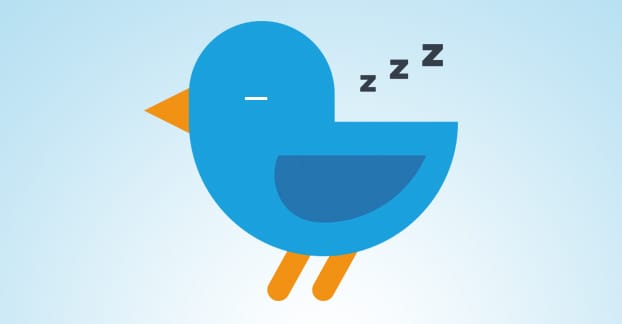

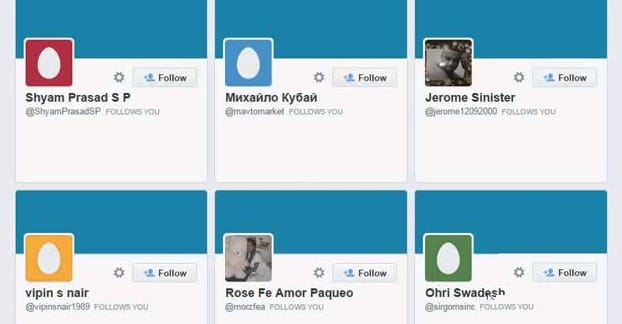

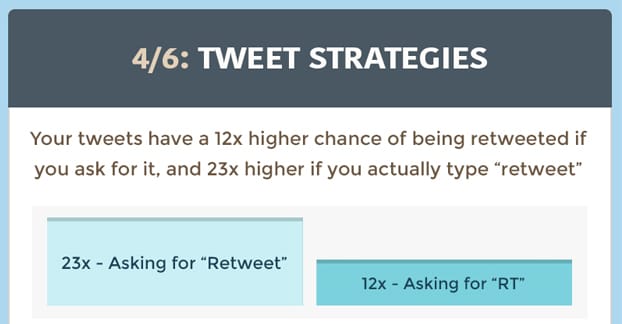
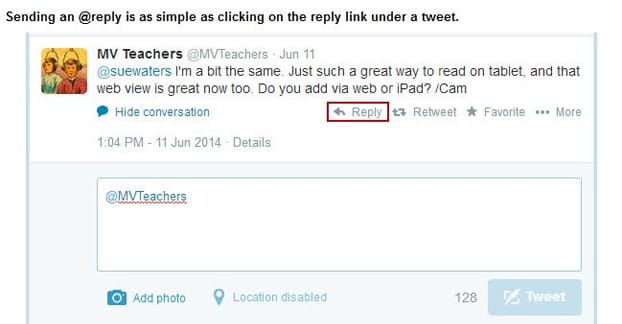
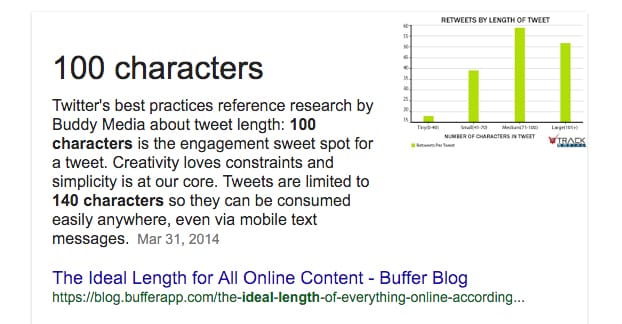
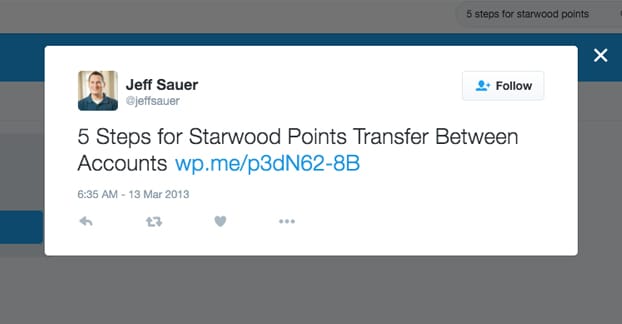




I have 99 followers; but when I get a notification that someone “liked” my tweet, the heart under the tweet itself remains gray. Why?
I got more stars and retweets when I had less followers because I spent more time starring and RTing others. I don’t do that much anymore simply because I find it boring and most people are not that funny (I’m there to laugh) and I’ve noticed that with my lack of engagement came a lack of engagement on the part of other users. I tried to get back into it but I think I turned off a lot of my followers by being absent or self-focused over the past 5 years.